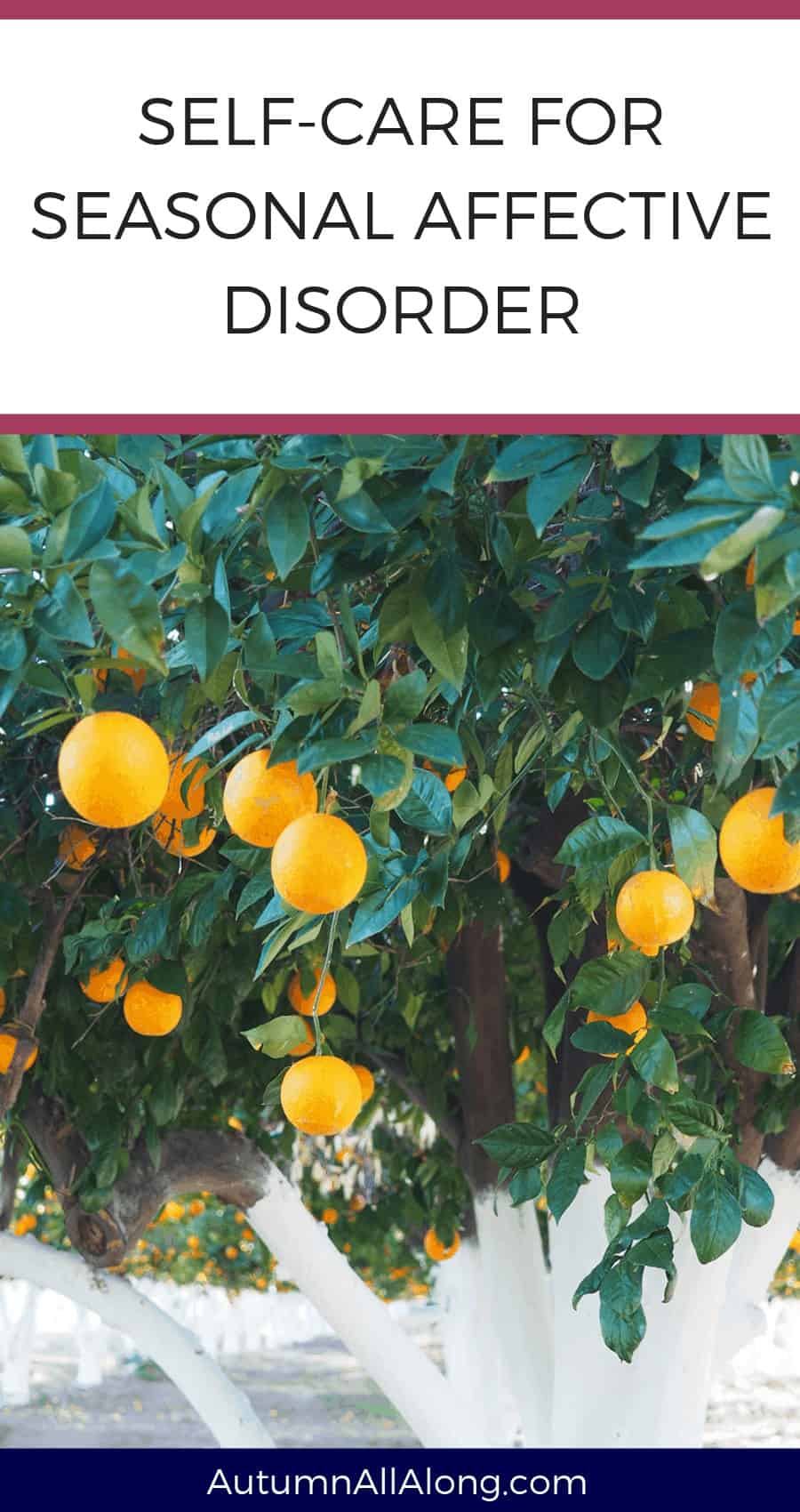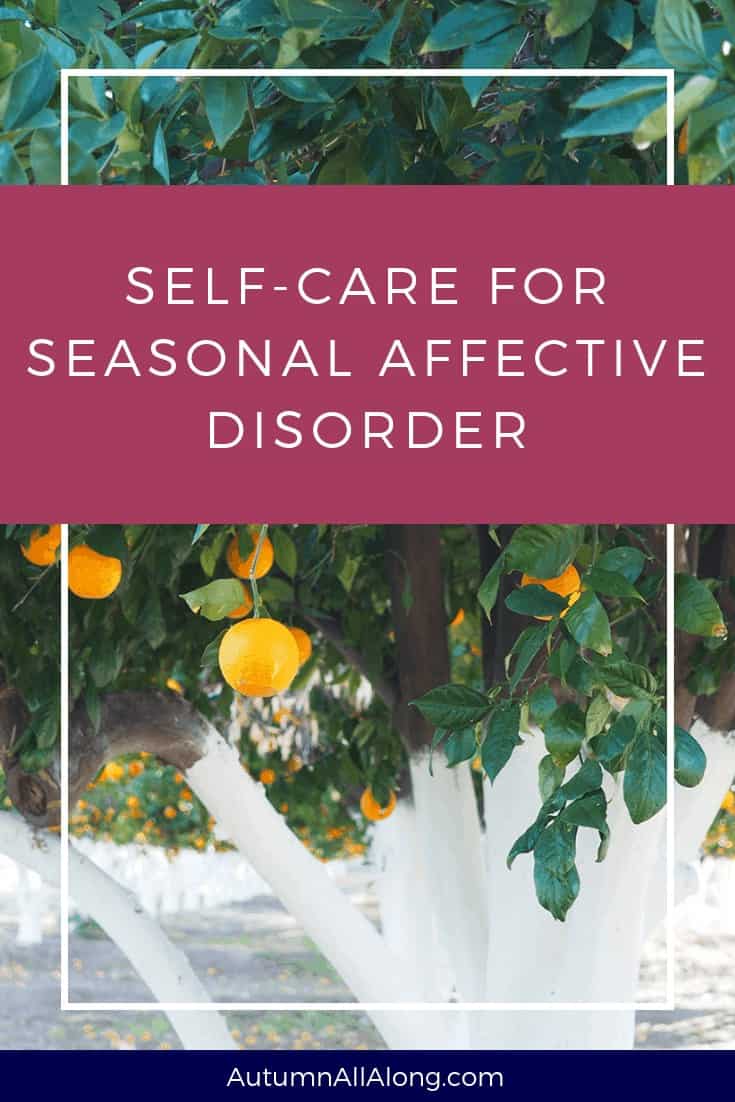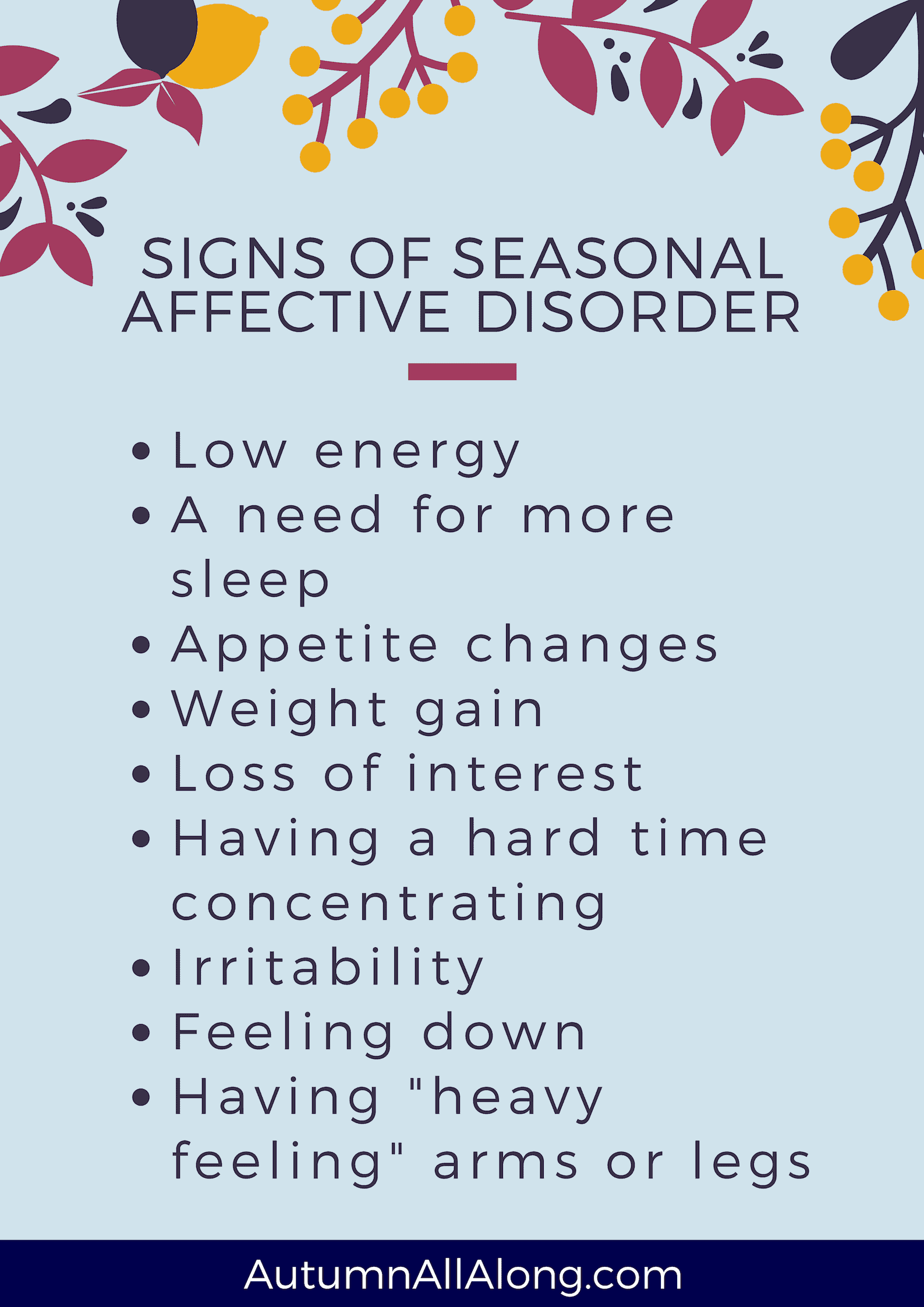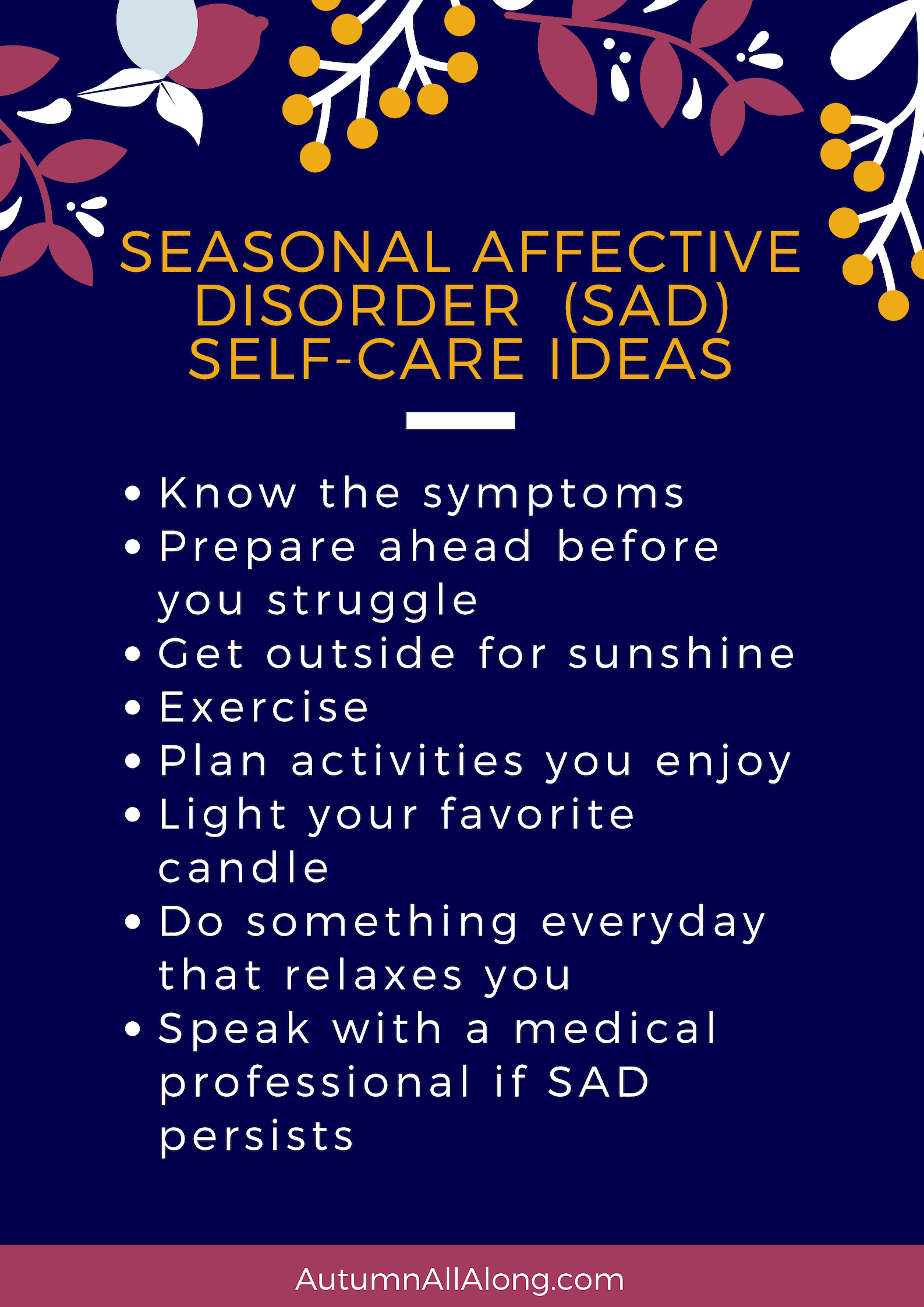This post includes affiliate links which help support Autumn All Along.
Every year when September rolls around I get so excited. I’m like every other basic girl who is so excited for cardigans, chunky sweaters, and being able to pull out my booties. I love that the mosquitoes go away when it becomes cooler outside. I love how cologne and perfume lingers in the air a little bit longer when the air is crisp. I love going to the apple orchard per tradition every year with my husband. However, every year though, like clockwork, I begin to need more and more sleep. The type of food that I want completely changes. I have to keep on my weight. My energy level could be matched by a slug. The last few weeks, with it getting darker outside, I have been actively practicing self-care for Seasonal Affective Disorder (SAD) to try to make life everyday better match my exuberance around the season change; I know these simple tips could help you too.
WHAT IS SEASONAL AFFECTIVE DISORDER?
I remember when I transferred out to Utah as a sophomore feeling so incredibly tired. I remember looking outside and all of the trees were bare so much earlier than I was used to. I remember feeling so incredibly tired and melancholy. When my junior year rolled around, the feeling came back when the weather became cooler. I found myself sick constantly when it was cooler outside and I really struggled feeling happy. I found that going to the gym helped a lot and I went to the gym a lot. It wasn’t until a few years later that I heard about SAD and began understanding what I was experiencing.
While there are separate SAD symptoms for spring and summer, I’m going to focus on SAD for fall and winter in this post. I am not a professional mental health professional or medical Doctor, but I can share my experiences. Some of the signs of SAD are listed below:
There is no shame in having Seaosnal Affective Disorder. SAD happens for a variety of reasons all of which people can’t really do anything about. The following are reasons why people develop SAD in the fall and winter months:
- Reduced sunlight may disrupt your body’s circadian rhythms.
- Reduced sunlight can cause your serotonin levels to drop which can trigger sad feelings or depression.
- Reduced sunlight can cause the body’s melatonin to change which impacts mood and sleeping patterns.
WHEN SEASONAL AFFECTIVE DISORDER NEEDS MORE THAN SELF-CARE
While I’m going to share some wonderful self-care tips that I have found to help my SAD, sometimes self-care alone does not fully help and professional help is needed. According to Mayo Clinic:
It’s normal to have some days when you feel down. But if you feel down for days at a time and you can’t get motivated to do activities you normally enjoy, see your doctor. This is especially important if your sleep patterns and appetite have changed or if you feel hopeless, think about suicide, or turn to alcohol for comfort or relaxation.
Even though I was going to my counselor, doing self-care, and already had a very small dosage of Selective Serotonin Reuptake Inhibitors (SSRI or depression/ anxiety medication), I found it wasn’t enough this last fall and winter. I went to my Doctor in tears because I realized I was having an extreme amount of increased anxiety. I felt lost and confused because my increased anxiety was completely unfounded in anything. After a few days, my quality of life was SO MUCH improved and I regret putting off going to my Doctor sooner.
SEASONAL AFFECTIVE DISORDER SELF-CARE
My SAD was at its worse when I was a full-time teacher. I worked in a classroom without a window and then drove straight to physical therapy; the only time I ever saw sunshine during this period in the fall and winter was through the lunch room window and through my car window. It was honestly so hard to never see real sunshine except through a window and it really impacted me. During this time was when I began to realize that SAD self-care meant so much.
I need SUNSHINE, EXERCISE, and I need to plan ahead. Instead of being shocked every year when I start to feel sluggish, I’ve learned to be proactive and expect it. By being able to plan ahead, I’m able to have a head start to minimize the effects of SAD on myself.
QUESTIONS TO ASK YOURSELF ABOUT YOUR SEASONAL SELF-CARE
I do feel that self-care differs for everyone. I love snuggling in my bed with a book, but maybe you’re not a book reader. Nothing makes me happier than being able to enjoy animals, but maybe you don’t like animals.
- Do you think you struggle with SAD?
- What makes you happiest?
- What are negative things in your life that you can minimize during this time?
- What is an activity that you enjoy outside?
- What does your current self-care routine look like?
- When can you access sunshine?
- Can you walk on your lunch break?
- Do you have access to light therapy?
- Do you think your SAD needs to be addressed by a medical professional?
PRODUCTS THAT CAN HELP WITH SEASONAL AFFECTIVE DISORDER
- Light Therapy
This NatureBright SunTouch Plus Light and Ion Therapy Lamp is one of the highest rated light therapy lamps on the market. 3000+ 4.5 star reviews on Amazon doesn’t lie. This therapy lamp is designed to mimic the effects of a sunny day while the negative ions are designed to bring you the calming properties of being outside. - Sunrise Simulating Alarm Clock
This Wake Up Light Sunrise Digital Alarm Clock has over 900+ 4.5 star reviews on Amazon. This alarm clock simulates sunrise and sunset to help you wake up naturally. Additionally, this alarm clock has nature sounds. The brightness for this clock and light colors can be adjusted. - Aroma Therapy
This Aromatherapy Essential Oil and Diffuser Set has over 600+ 4 star reviews on Amazon. In the fall and winter when I’m having the blues, I really appreciate citrus and lavendar smells because they make me feel happy and calm. However, you can make your own combination 🙂 .
I know a lot of people suffer from SAD without realizing it or without knowing what to do about it. I know it has been a journey for me to figure out how to best manage it and every year has not been the same! I’m working on my self-care routine to make sure that I’m not sleeping the rest of the year away and I hope you do the same to alleviate your symptoms that you experience.




